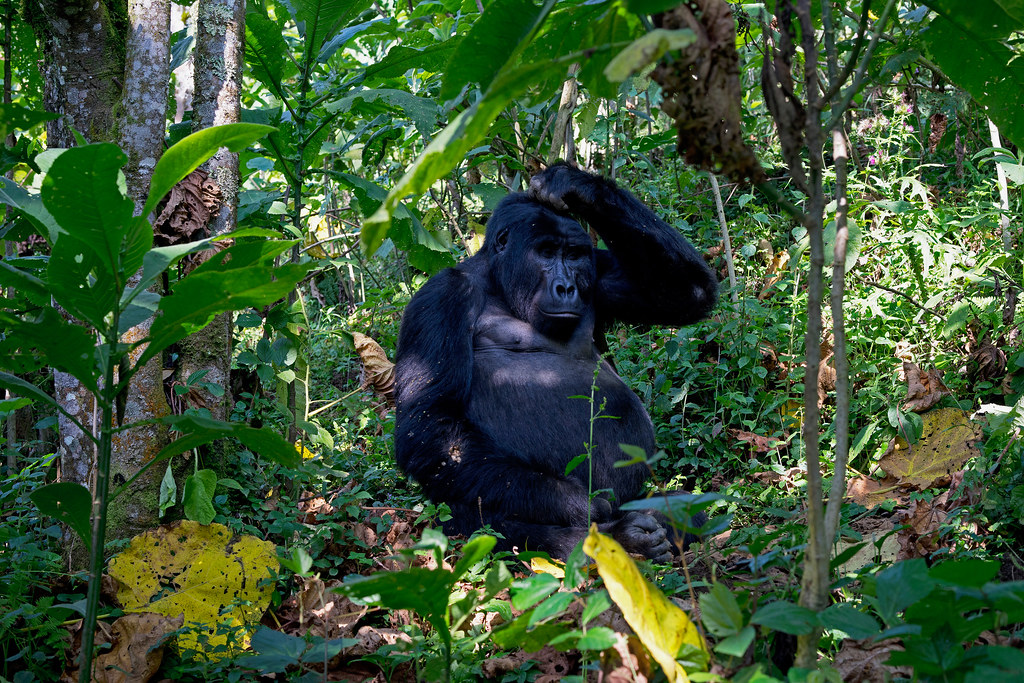The Heartbreaking Factors Driving Gorilla Poaching in Africa
Gorilla poaching in africa facts — How many gorillas are killed each year — Is gorilla hunting legal — Why are gorillas endangered — How many gorillas are left in the world — Gorilla bush meat — Why do poachers kill giraffes — How many mountain gorillas are left
What drives the poaching of gorillas? Mountain gorillas face threats from poaching for a variety of reasons, and this article will explore several of those factors.
These rare primates inhabit the vibrant landscapes of central Africa, especially in Uganda, Rwanda, and Congo.
In the 19th century, they faced a perilous decline, and the grim statistics of mountain gorilla poaching reveal the tragic loss of many lives due to the actions of poachers.
The saga of mountain gorilla poaching in Africa has persisted for many years.
What drives the poaching of gorillas?
The conservation efforts spearheaded by the late Dian Fossey, an American primatologist, led to a remarkable rise in the population of mountain gorillas.
Fossey devoted her life to the protection of mountain gorillas, a journey that ultimately culminated in her tragic death in 1985.
She passionately denounced the poaching of gorillas. Before Fossey’s emergence, the landscape of Rwanda was fraught with the peril of gorilla poaching, but her efforts illuminated the critical need to protect these remarkable primates.
Conservationists embraced the challenge of protecting the environment following her efforts.
Gorillas travel together in lively groups of 5-30 individuals, guided by a powerful alpha-male known as a Silverback.
You will discover this when embarking on a gorilla trekking journey in Uganda, Rwanda, or Congo.
The silverback leads the group with authority, guiding their daily adventures and shaping their routines.
Gorillas embark on a daily quest for food, tirelessly foraging until they settle down in the nests they build each evening at 6 pm.
Unfortunately, many obstacles emerge during their journey. Some of them encounter dangers along the way, and gorillas have also been known to fiercely protect themselves and their families, leading to the demise of those who threaten them.
National Geographic Gorilla Conservation Documentary
Factors contributing to the poaching of gorillas
Despite the challenges posed by conservation efforts, gorilla poaching persists for a variety of reasons, as poachers still find ways to reach these magnificent creatures in their wild surroundings.
Here are some of the key reasons behind gorilla poaching:
For sustenance Poachers pursue gorillas for their flesh, frequently to nourish their families. Even militia groups in the Virunga Conservation Area on the DR Congo side depend on gorilla meat for their survival.
Bushmeat trade
Gorillas have also entered the realm of the bushmeat trade. The allure of gorilla meat has driven poachers to seek out these endangered primates, drawn by the promise of a lucrative reward stemming from its esteemed taste and high demand.
Enchantment and allure
Some believe that certain body parts of mountain gorillas, including their hands, heads, and legs, hold mystical qualities and are utilized by witchdoctors for a variety of purposes.
This conviction held by traditional healers has played a role in the poaching of gorillas.
Gorillas often face the threat of being poached, taken away, and unlawfully traded as pets to affluent individuals, private zoos, and researchers.
Many locals have also teamed up with poachers in search of profit.
Traps Gorillas may inadvertently become targets of traps designed for other forest creatures such as antelopes, duikers, bush pigs, bushbucks, and others because of their movement through the wild.
Trophies Certain individuals display deceased gorillas as trophies or emblems of dominance, feeding their sense of superiority.
Additional Elements
In addition to the reasons previously discussed, gorillas face the risk of accidental deaths from a range of lesser-known factors:
Insufficient understanding
In certain situations, community members might hunt gorillas, often unaware of their significance to the ecosystem and the nation. Teaching these communities about the importance of mountain gorillas can lead to a decrease in hunting.
Diseases Gorillas face significant risks from human diseases because they lack the necessary immunities, rendering them vulnerable to various illnesses. To ensure the safety of the gorillas, visitors who are unwell are prohibited from visiting them, helping to avoid any risk of disease transmission.
Conflict and turmoil
The civil wars in Rwanda and Congo have historically endangered mountain gorillas, with persistent turmoil in certain regions, especially in Congo.
Unexpected calamity
Wild events like landslides, floods, and intense rainfall can significantly affect gorilla populations.
Loss of habitat
The encroachment of human populations leads gorillas to seek refuge in higher elevations, exposing them to the dangers of diseases such as pneumonia and the threat of mortality.
Forests are transformed for farming, habitation, industry, and beyond.
Exploration of oil and gas
The pursuit of oil and gas in Virunga National Park, Congo, has heightened the dangers of poaching and the spread of diseases among gorillas.
Despite efforts to tackle gorilla poaching, it continues to pose a significant challenge.
Mountain gorillas welcome tourists, and permits are necessary, with different prices in Uganda, Rwanda, and Congo.
Uganda presents thrilling opportunities for tourists to engage in gorilla habituation experiences, where they can accompany researchers and scientists throughout the fascinating habituation process.

